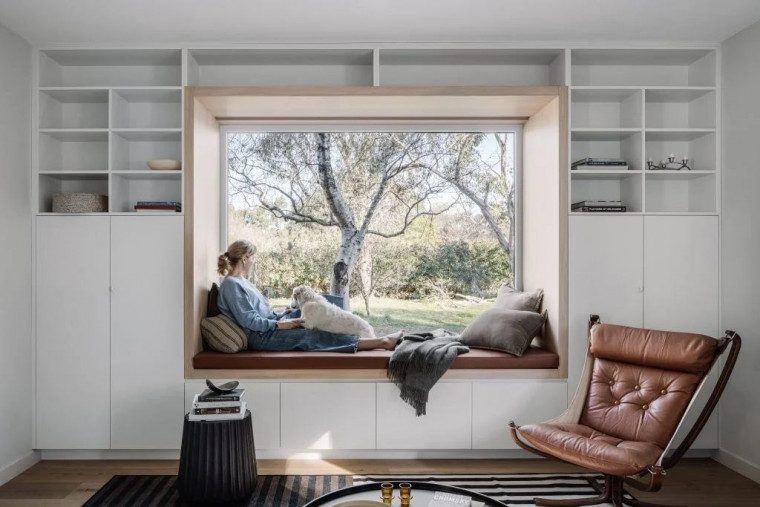-
Australia
Copyright © 2025 Powered by BCI Media Group Pty Ltd
Confirm Submission
Are you sure want to adding all Products to your Library?
Contact Detail

Investing in double or triple glazed windows can lead to major advancements in energy efficiency for residential homes, apartment buildings or commercial spaces. Yet which type of glazing is best for your windows when it comes to both thermal comfort and price?
Thermotek offers affordable, sustainable uPVC window and door systems in both double and triple glazing. Manufactured in Melbourne, we harness world-class technology for the needs of the local market.
Let’s take a look at the major benefits of each type of window glazing, so that you can make a considered choice that enhances energy efficiency and optimises thermal comfort, while also keeping within the project budget.
How do double glazing and triple glazing windows work?
Instead of the traditional single window layer, double glazed windows have two panes of glass separated by layers of insulating gas, while triple glazing boast three panes.
Both enhance energy efficiency, with the extra layer in triple glazing trapping more heat in winter, making it a popular choice for colder countries.
The key principle behind glazing is insulation. The gap between the panes of glass creates a barrier that reduces the transfer of heat between the inside and outside of a building. This helps to keep a building warmer in winter and cooler in summer.
The panes are separated by a spacer bar, which maintains the gap and provides structural support. It is made of a poor conductor of heat like the uPVC in Thermotek window profiles. This further minimises heat transfer.
The gap between the panes is then either filled with argon gas. As they are denser than air, these gases further reduce heat transfer and optimise insulation.
Thermotek windows also have a low-emissivity (low-E) coating on the glass panes. This thin coating helps reflect heat back into the interior of the building during winter and reflects heat away during summer.
How does sealing play a part in the effectiveness of double or triple glazed windows?
The edges of double glazed or triple glazed windows need to be tightly sealed to prevent air or moisture from entering the gap between the glass panes. This maintains the integrity of the insulation and prevents condensation from forming.
All Thermotek window and door systems feature dual seals frames that also cater for a wide range of opening configurations.
What are the benefits of double glazing?
Double glazing offers several notable benefits that make it a popular choice for modern buildings. Its design, featuring two panes of glass separated by a gap of argon gas, significantly enhances energy efficiency by reducing heat loss and minimising drafts.
This improved insulation not only results in lower energy bills but also contributes to a reduction in carbon emissions, making double glazing an environmentally friendly option.
Additionally, the insulating properties of double-glazing help to maintain a more consistent indoor temperature, ensuring greater thermal comfort throughout the year.
There are other benefits beyond energy efficiency. Double glazing also provides effective noise reduction, creating a quieter living or working environment by minimising external disturbances. The extra layer of glass also increases protection against break-ins.
Moreover, the added insulation of double glazing reduces condensation on windows, helping to prevent mould growth and improve indoor air quality.
This combination of energy efficiency, noise reduction, and improved comfort makes double glazing a valuable investment for a property.
Compared to double glazing, what are the increased benefits of triple glazing?
Building upon the benefits of double glazing, triple glazing offers even greater advantages for those seeking enhanced energy efficiency and comfort in their homes or buildings.
With an additional layer of glass and an extra argon gas gap, triple glazing significantly boosts insulation, further reducing heat loss and drafts compared to double glazing. Its ability to reduce heat loss has made it a popular choice in areas that experience extreme cold.
This superior insulation not only leads to even lower energy bills but also makes a substantial contribution to reducing carbon emissions. For buildings concerned with meeting sustainability protocols, triple glazing is a strong choice.
In addition, the increased thickness of triple glazing provides an additional barrier against noise pollution and gives heightened security, ensuring an even quieter (and safer) indoor environment. In summary, all the benefits of double glazing are enhanced by the extra layer of triple glazing, including excellent indoor air quality and overall comfort. It is a premium choice for discerning homeowners and property developers, offering long-term benefits and value.

Which is more suitable for the Australian Climate?
In the Australian climate, both double and triple glazing can offer benefits, but the choice depends on specific factors such as location, building design, and budget considerations.
Double glazing is widely used and suitable for many regions of Australia. It provides significant insulation and effectively reduces heat loss in colder climates, such as southern regions, during winter. In warmer regions, double glazing reduces heat gain from the outside during summer, although additional shading and insulation may be required to maximise its effectiveness in hotter climates.
Triple glazing offers even higher levels of insulation and energy efficiency compared to double glazing. However, it may be more suitable for extreme climates or areas with particularly high energy efficiency requirements. In some parts of Australia, especially in areas with harsh winters or where noise pollution is a significant concern, triple glazing could be a worthwhile investment.
What are the drawbacks of triple glazing vs double glazing?
While triple glazing indeed offers enhanced insulation and noise reduction over double glazing, it comes with an increased investment.
It’s essential to consider the higher cost of triple glazing and weigh it against the potential long-term benefits in terms of energy savings and comfort, plus look at window systems which offset this cost with affordable profile materials.
The greater expense of triple glazing stems from the need for extra materials and labour during installation. The weight of triple-glazed windows means sturdier framing materials are needed to support them, which can inflate costs.
Thermotek window and door systems, such as the stylish Boutique Series, tackle the issue of triple glazing’s higher cost by utilising uPVC for the frames. This makes it a more economical alternative to pricey thermally broken aluminium solutions, allowing them to achieve exceptional thermal performance with triple glazing, at a more budget-friendly price point. However, double glazing will be more affordable overall.
Ultimately, the decision between triple and double-glazing hinges on the project itself – energy rating requirements, location, climate, noise levels, and financial considerations.
While triple glazing might be a transformative choice in colder climates where insulation is paramount, double glazing will work best in milder climates or where noise isn’t a significant concern, offering a more cost-effective solution.
Which is more versatile for design – double glazed or triple glazed windows?
As it is more popular in Australia, double glazing generally has more design versatility and can be used in every window type.
Thanks to Thermotek’s uPVC window frames, triple glazing is available in all of our systems, including our Smart Slide windows and doors, plus the Boutique Series.
The Boutique Series combines visual styling with world-class design and is available in a range of architectural finishes
Choose Thermotek window and door systems in double glazing or triple glazing
At Thermotek, we harness the precision of German engineering for the Australian market. Crafted locally, our fusion-welded uPVC frames feature dual-sealed air chambers, setting a high standard for insulation in modern homes that are striving for both energy efficiency and a low carbon footprint.
By combining energy efficient and durable uPVC frames with double or triple glazed windows, we can help your building project achieve and even exceed the 7-star NatHERs rating now mandated by the Australian National Construction Code (NCC). Our range includes options for both double and triple glazing, fortified with multi-point locking mechanisms to guarantee top-notch security. Designed to surpass Australian Standards, our systems are engineered to withstand bushfire risks up to BAL 40.
If you’re seeking superior quality combined with energy efficiency, Thermotek has you covered. Get in touch with us today for personalised guidance on selecting the ideal window and door systems for your building project.



